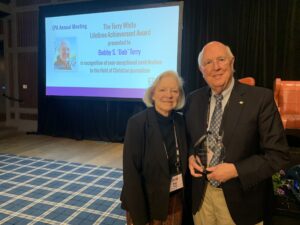
EAST ASIA (BP) — In a dim room walled with mirrors in East Asia, Phillip Bonner* and Jared Knight* watch a flashing TV screen and sing along to blaring karaoke music with their young friends. After a few hours, they pause the music and share their testimonies.
The next day, the two IMB workers sit in their small apartment. Bonner is at his computer creating artwork representing a Bible story in the style traditional to the unreached people group they seek to evangelize. Knight sits at a table with an open scrapbook, attaching pictures and writing Scripture verses.
The International Mission Board identifies a people group as an ethno-linguistic group with a common self-identity, and considers it unreached when less than 2 percent are evangelical Christians.
Bonner and Knight hail a taxi to visit their friend Liu* at his curtain shop. Liu, well-versed in his minority people group’s culture, weaves into brocades and clothing traditional designs representing his people’s legends.
The two men show Lui prints of their artwork and tell him the stories the art represents. Liu is not ready to commit his life to Jesus, but he listens intently. His people are oral learners with no written language and rely heavily on storytelling to communicate.
Liu is a witch doctor, healing people and casting out demons, and does not want to follow only Jesus. He wants to worship his ancestors, too.
Bonner and Knight will continue to use a variety of creative, surprising methods to share the Gospel story with Lui and many others in his people group.
Tough beginning
Bonner and Knight serve through IMB’s two-year Journeyman Program for college graduates. The two had worked a semester with students on university campuses in East Asia through IMB’s Hands On program for college students.
As journeymen, they began working with a minority people group called the Nomlang.* They quickly learned that working with a people group can be much more challenging than working at a university.
“At a university, you can make friends really, really quickly, and everybody thinks that you’re like a rock star,” Knight said. “Basically, you’re an instant friend just because you can speak English.”
Getting to know their people group was “really tough” in the beginning, Bonner said. He and Knight took numerous buses and trekked mountain paths in sweltering heat and humidity to visit the Nomlang villages. But people didn’t want to spend time with them because the two weren’t using a culturally relevant approach.
Learning what was culturally relevant took time and humility.
“Most of the things we do are by accident,” Bonner said. He and Knight would think they had a good idea of how to connect with people, but “when it becomes a really good idea is when the accident happens or when your friends tell you how to do it better.”
Singing karaoke was one of those “accidents.” Knight and Bonner thought going to the beach would be a great way to spend time with their new friends. But no one wanted to risk getting tanned; tanning is not popular in their culture.
For many young East Asians though, karaoke — called KTV — is a big form of entertainment. The journeymen were willing to try to connect with their new friends that way, but their first attempt was exhausting.
“You’re just trying to survive when you’re at a three-hour [KTV] session with people — they’re constantly trying to get you to drink, they’re constantly trying to get you to sing as loud as possible,” Bonner said.
When friends in their Bible study group suggested a KTV party, the journeymen were not thrilled. They attended, though, and saw that the group’s relationships were strengthened.
The journeymen decided to take it “one step further” by inviting non-Christian friends who wouldn’t normally attend a Bible study, but would come to KTV. Between songs, they shared Bible stories and their testimonies.
“That was very encouraging to see the potential of it,” Bonner said, “taking something that at varied times can be a bad thing and redeeming that and taking it to something that can be used to proclaim God’s Good News.”
Scrapbooking for Jesus
Another unexpected method of ministry for Knight is scrapbooking.
“I never thought that I would do scrapbooking,” Knight said.
But when some Bible study friends prepared to leave for college, he wanted to give a gift to help them remember their good times together and what they had learned. Knight printed photos of them with their friends and put those in a scrapbook, along with Bible verses.
Knight hopes the scrapbook will remind his friends that “Jesus is at the center. We have to be connected to God. We’re connected to God through reading the Bible and being part of the body of Christ, and we need to go and make disciples.”
As the journeymen learned more about the Nomlang culture, they began to realize how important their traditional artwork was, and how they could utilize that to share the Gospel.
“Since the Nomlang have an unwritten language, they would often weave images into brocades or clothing, things that they’d have around their house, and that’s how they remember their stories,” Bonner said, noting the stories may be used to teach morality and ethics.
When they first started making the art, Knight used his computer to create basic symbols based on photos from around town. Bonner then took those symbols and expanded them into full pictures, adding black backgrounds and borders similar to those found in customary weavings.
The journeymen have created nine pieces of art that represent important Biblical stories and concepts, including baptism, prayer and a short chronological story following history from creation to the time of Christ on earth. They tested their art in Nomlang villages, making sure the symbolism translated correctly.
Knight and Bonner are not stopping there. They plan to take a weaving class at the local university with Liu, meet more of his people group, learn to make the weavings and learn how the designs affect the Nomlangs’ lives, Knight said.
The journeymen give God the credit for their artwork. Bonner has no background in art besides a mandatory art class in seventh grade.
In just a year, the journeymen have gone from having hardly any Nomlang friends to “almost too many people that want to meet with us, that want to be our friends,” Bonner said. He thanks God for those friendships.
“[God] showed us and humbled us that we weren’t going to make friends on our own, it was only going to be by His power,” Bonner said. “And now going forward, I want to see those relationships develop more so that we’re able to disciple them.”
Bonner and Knight plan to continue trekking to the Nomlang villages to build relationships and creating more Bible story artwork. The journeymen also would like to help teach nationals how to record audio Bible stories and create original worship songs.
“There’s a lot of work still to be done,” Bonner said.
He and Knight have many goals for their last year of journeymen service, but they are relying on God to accomplish this Kingdom work.
“If we’re trying to do things out of our own strength, then nothing is going to come of that long-term,” Knight said. “But when we’re connected to Jesus, when we’re connected to the vine, that’s when things happen.”
Pray for the journeymen
IMB requests the following prayers on behalf of Bonner and Knight:
— Pray they will be able to better understand the Nomlang and better craft Bible stories and artwork.
— Ask God to raise up local believers to take leadership roles to continue the ministry after the journeymen leave.
— Pray they will be bold as they share Christ with the Nomlang, and that many will believe and share the Gospel with their friends and family.
— Pray their friend Liu will come to know Jesus as the one true God and use his cultural knowledge to reach his own people for Christ.
–30–
*Names changed. Laura Fielding is an IMB writer. Get Baptist Press headlines and breaking news on Twitter (@BaptistPress), Facebook (Facebook.com/BaptistPress) and in your email (baptistpress.com/SubscribeBP.asp).















